Contributed Abstract Submissions Now Open

Policy News Headlines
We are tracking the latest developments in science policy and news for the ecological science community. The following link is updated periodically to bring you current news headlines.
Read more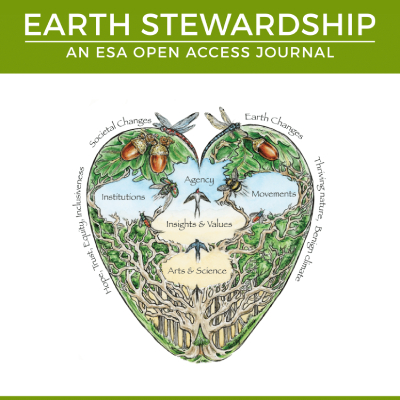
Earth Stewardship Launch
We are pleased and proud to announce the official launch of our newest journal, Earth Stewardship, fully Open Access and dedicated to fostering a broad foundation for Earth stewardship.
Read more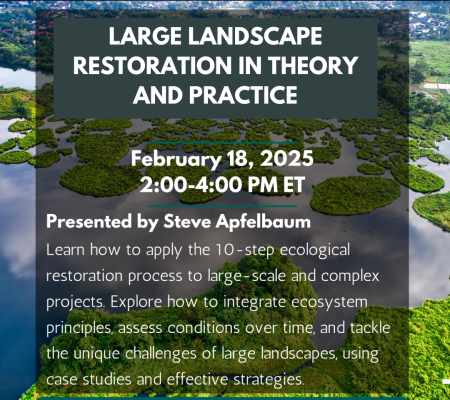
Large Landscape Restoration
Our second restoration workshop with Steve Apfelbaum brings the 10 step process to bear on large landscapes, with real-world examples. Feb. 18, 2:00-4:00 PM ET.
Read moreJournals & Publications
-
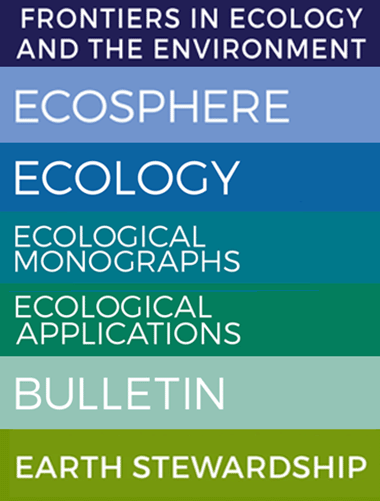
The Ecological Society of America has over 100 years of journal publishing history and offers some of the most widely read and cited journals in the field of ecology. The seven journals in our portfolio encompass a wide range of paper types to include an array of aims and scope of study, making them an important and accessible outlet for scientists, researchers, practitioners, professionals, citizen scientists, and others seeking to publish their work. ESA staff provide editorial support with our publishing partner, John Wiley & Sons, and several discounts towards publication in ESA journals are available from our publisher and from ESA. Publishing in ESA journals contributes to ESA programs for students, early career researchers, and underrepresented groups, and we thank our editors, reviewers, authors, and readers for their support.
-
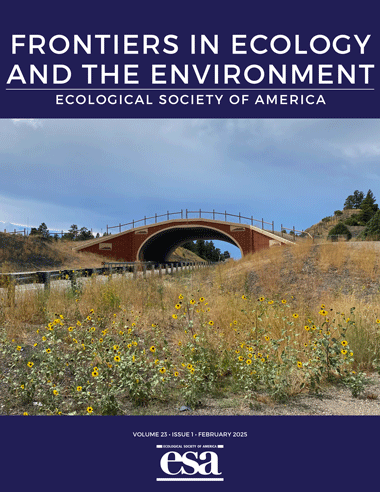
Highway wildlife crossings can be enormously effective at reducing wildlife mortality and improving driver safety. However, their siting and design too often fail to account for climatic changes and impacts. To address this gap, Littlefield et al. synthesized the science surrounding wildlife crossings and climate adaptation and folded those lessons-learned into recommendations for practitioners and policy makers. In their paper in the February issue of Frontiers, the authors applied these recommendations to southwestern Colorado to empirically prioritize candidate crossing locations to explicitly account for how climatic and land-use changes may shift elk (Cervus canadensis) migration. The results of the connectivity models revealed which locations are most likely to support elk movement both today and in the future, thereby suggesting possible targets for climate-informed wildlife crossing investments.
-
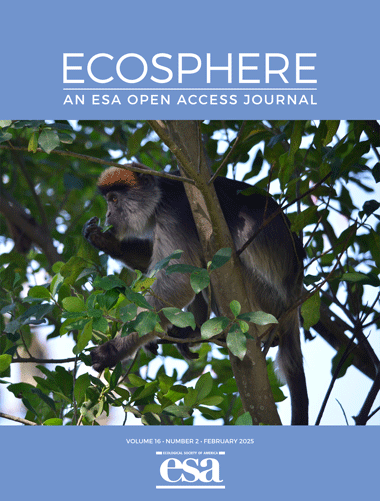
The Ugandan red colobus (Piliocolobus tephrosceles) is an endangered primate native to Uganda and Tanzania. The feeding behavior of these folivorous, group-living, and mostly arboreal monkeys was studied using a unique dataset collected between 2006 and 2016 in Kibale National Park, Uganda. In their paper in the January issue of Ecosphere, Lauer et al. demonstrated that red colobus monkeys clearly chose young leaves over other plant parts in their diet. At the level of individual food items (defined by plant part and species), they fed on many different foods, though their diet was dominated by a few key items. The study also revealed a positive association between the protein-to-fiber ratio and the consumption frequency of different food items. Developing a robust understanding of food choices and nutritional goals can inform conservation efforts by guiding habitat protection and restoration strategies toward critical resources.
-
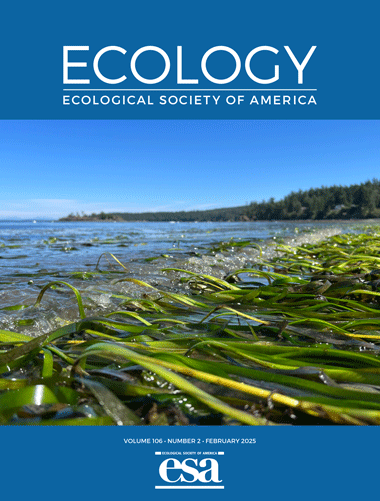
The receding tide reveals vibrant eelgrass (Zostera marina) meadows in the San Juan Islands, Washington, USA. Eelgrass creates biodiverse habitats worldwide for many fish and invertebrates, including arthropod and gastropod herbivores, but is at risk from seagrass wasting disease, caused by the marine protist Labyrinthula zosterae. Using a combination of lab experiments and field surveys, Graham et al. found that isopods (Pentidotea wosnesenskii) and snails (Lacuna spp.) can facilitate seagrass wasting disease infection via grazing scars. Field surveys also demonstrated strong associations between disease and grazing scars, though herbivores had different feeding preferences for diseased or asymptomatic eelgrass. These findings, published in the January issue of Ecology, suggest that marine herbivores can play important—and different—roles in the health of eelgrass.
-
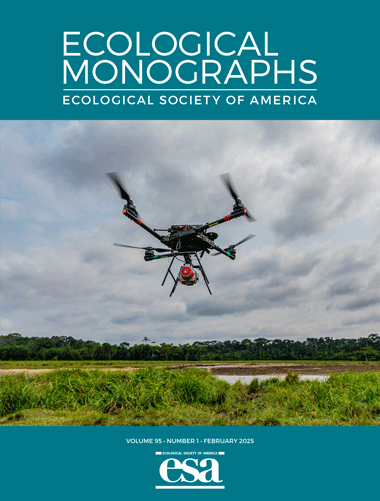
Remote sensing approaches—like the LiDAR-equipped drone in Ecological Monographs's February cover image—have emerged as powerful tools for quantifying 3-D vegetation structure. In their study in the November 2024 issue, Coverdale et al. combined high-resolution measurements of vegetation structure with long-term data from a large-herbivore exclosure study in Kenya to explore the relationship between herbivores, plant diversity, and vegetation structure. The authors found that herbivores, especially elephants (Loxodonta africana), directly influence individual plant morphology, but also indirectly affect tree and herbaceous structure by altering plant diversity.
-
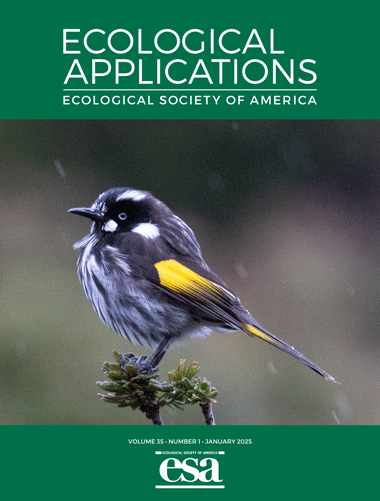
In their study in the December issue of Ecological Applications, Makdissi et al. explore the relationships between time since fire and bird species across a gradient of increasing aridity in southeastern Australia. Focusing on two semi-arid vegetation types, the authors examine whether fire-responsive species, including the New Holland honeyeater (Phylidonyris novaehollandiae), pictured here on the January cover, exhibit consistent responses to fire both within and between the vegetation types, and across the environmental gradient. The authors also explore the potential implications of using plant-derived fire management prescriptions on the occurrences of these bird species, particularly in the context of climate change.
-
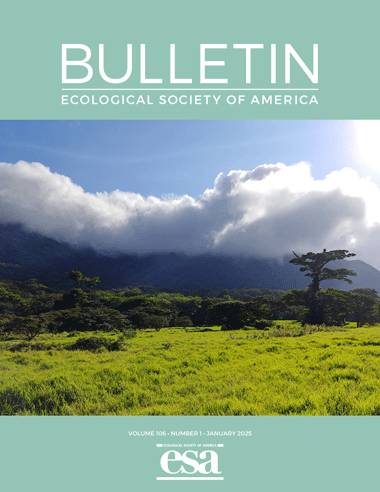
The January issue of the ESA Bulletin examines the impacts of social change and technology on ecological education: "On the crossroads of ecology and education" reviews significant contributions from ecologists and educational theorists emphasizing the importance of connecting ecology and education; "Free online multiplayer games as inclusive tools for teaching ecology" explores integrating computer-based games as a learning tool; "From prototype to reality: moving beyond the technology hype in ecological research" documents the trials of creating and integrating an operational device for ecological research.
-
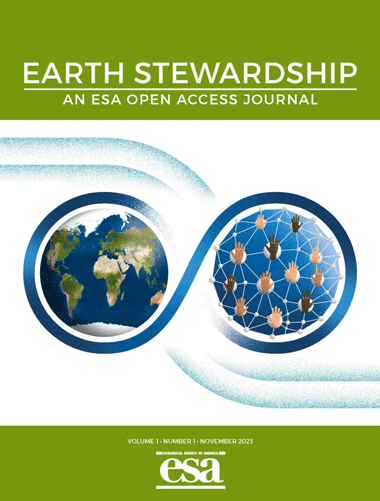
We are delighted to announce a call for submissions for Earth Stewardship. This exciting new Open Access journal, launched with our publishing partner, John Wiley & Sons, calls for a broad spectrum of scientifically and technologically innovative and groundbreaking contributions including cross-cultural perspectives from leading researchers, policymakers, traditional custodians of land and sea and indigenous communities. Earth Stewardship publishes applied and theoretical articles to promote a broad, intercultural, and participatory foundation for earth stewardship.
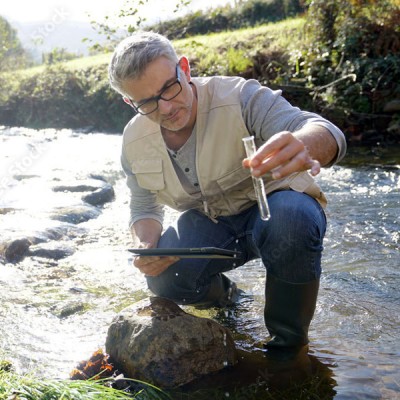
Professional Certification
Employers in all sectors value a credential that validates your skill as a professional. Learn more about ongoing changes to ESA certification and start your application today!
Read more
Opportunity Fund Donations
Make a difference and fund programs which empower, educate and embolden both the current and next generation of scientists in the vast field of ecology.
Read more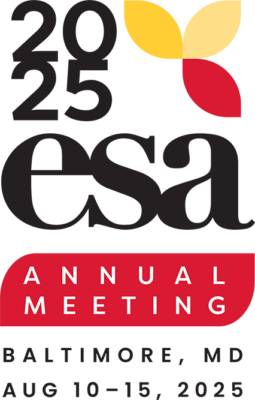
Next Year's Annual Meeting
The 2025 Annual Meeting will be held in Baltimore, Maryland. Select the following link and check out the theme, preliminary schedule, exhibitor opportunities and upcoming deadlines for proposals.
Read more